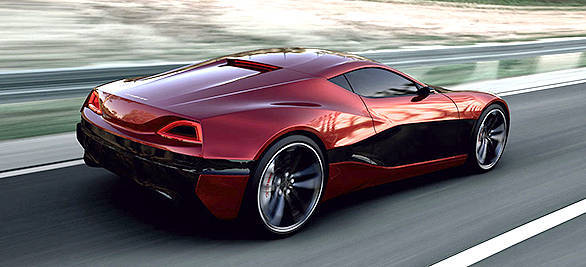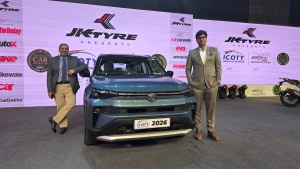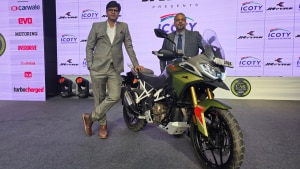Rimac unveils the worlds fastest production electric car
Don't feel bad if Rimac Automobili is a name you haven't heard of. Elon Musk probably hadn't either till the 2011 Frankfurt Auto Show where Rimac first showed off their Concept_One. At the time, the 1088PS electric supercar was just a concept, but five years later it is now ready for production. Going by the company's claims, it will be considerably quicker than Tesla's mental 762PS, all-wheel drive P90D. In fact, Rimac says this is the world's fastest electric car.

Rimac is a Croatian company that was started in 2009 by Mate Rimac when he was in his early 20s. It all started when Mate, who was a bit of a genius with electronics since he was a kid, bought a E30 BMW M3 to go drifting. After he blew the engine, Mate was given the opportunity to merge his love for cars and electronics. The result was an electric powered, 550 wheel-horsepower drift monster that became the development bed for the Concept_One.
 The original BMW E30 M3 that was used a development vehicle
The original BMW E30 M3 that was used a development vehicle
Over the past five years, the Concept_One has evolved from the original, er... concept and now boasts even higher performance numbers. 0-100kmph takes a claimed 2.6s, 0-200kmph 6.2s and 0-300kmph 14.2s while top speed is a lofty 355kmph. For a vehicle that weighs 1,950kg, this kind of performance is surreal and even faster than hypercars like the McLaren P1, Ferrari LaFerrai and Porsche 918 Spyder!

The production spec Rimac doesn't look very different from the 2011 Concept. It features a similar space frame chassis that uses aluminium and carbon fibre in certain areas for further strength. The pushrod suspension is also race bred while ride height can be hydraulically adjusted. The sleek looking body wrapped around all this is built in full carbon fibre.

As with most electric cars, the big challenge was designing the battery system to be compact and efficient. Through the years, the Rimac-designed battery module architecture was developed to what the firm deemed acceptable levels. An advanced battery management system monitors and balances each cell individually while a thermal management system works overtime to ensure the batteries are working in ideal conditions conducive to longevity and strong performance. Using all this technology, the 82kWh battery pack can consistently produce and receive (through regenerative braking) over one megawatt of power without thermal issues. That is considerably more power than the car currently produces, which makes the Concept_One quite track worthy.

Power comes from dual, front and rear mounted electric motors that make a total of 1088PS and 1,600Nm. The driving experience is dictated by Rimac's advanced torque vectoring systems. In a normal internal combustion engine, the drive from the engine first overcomes the traction at the wheels before an electronic stability program reigns the power in. The Rimac doesn't waste time with that since the all-wheel torque vectoring system simply provides as much power as each wheel can handle. The torque vectoring system can be set up by the driver for a neutral and safe setting that will be prone to understeer in extremes or to a more driver rewarding, oversteer friendly power delivery.
Rimac says that the low centre of gravity, massive and freely available torque as well as the lack of gearshift interruptions makes the Concept_One an entirely new driving experience. From what we can tell, the only limiting factor will be just how well the 245/35 R20, front and 295/30R 20, rear Pirelli P Zero tyres can handle all that weight.

Rimac will unveil the production spec Concept_One at the upcoming 2016 Geneva Motor Show, probably with a different name and with full pricing details. Scroll down for the full technical details.
Performance
- Maximum power: 1,088 KS (800 kW)
- Maximum torque: 1,600Nm from 0 to 6,500rpm
- Top speed: 355 kmph
- Acceleration: 0-100 kmph (0-62mph) 2.6 seconds; 0-200 kmph 6.2 seconds; 0-300 kmph 14.2 seconds
- Braking distance: 31.5m (100-0 kmph)
- Lateral g-force: 1.4g
- Charging: 22 kW on-board charger, DC-Combo fast charger (up to 120kW)
- Power to weight: 588PS/tonne
Dimensions
- Weight: 1,850kg
- Length: 4,187mm
- Width: 1,842mm
- Height: 1,070mm
- Front tires: Pirelli P Zero 245/35 R20,
- Rear tires: Pirelli P Zero 295/30R 20
- Weight distribution: 42 per cent front, 58 per cent rear
Battery package
- Voltage: 650V nominal
- Capacity: 82kWh
- Rimac Automobili Battery and Thermal Management Systems
Chassis
- Cro-Mo space-frame with aluminium and carbon fibre semi-stressed members
- Front and rear suspension: Double wishbones, fully adjustable, pushrod operated
- Hydraulically adjustable ride height
Powertrain
- Front: Rimac Automobili D-PM-OC-500 high speed dual permanent magnet oil cooled motors, 500 kW peak, 12.000rpm, up to 97 per cent efficiency.
- Two single speed gearboxes
- Rear: Rimac Automobili D-PM-OC-600 high speed dual permanent magnet oil cooled motors, 600 kW peak, 12,000rpm, up to 97 per cent efficiency. Two double clutch two-speed gearboxes.
- Rotor and stator oil cooling
- Milled aluminium housings
Steering system
- Electro-hydraulic servo system
Brakes
- Front brakes: Ventilated ceramic discs Ø 390 mm, 36 mm wide. 6-piston callipers, power-assisted.
- Rear brakes: Ventilated ceramic discs Ø 380 mm, 34 mm wide. 4-piston callipers, power-assisted.
- Up to 400 kW of regen-braking (adjustable)
Safety Systems
- ABS
- Torque Vectoring with stability function
- Safety disconnect systems in case of a crash
- Multiple ECU architecture for monitoring of safety-relevant electronic systems
Body
- Full carbon fibre body














